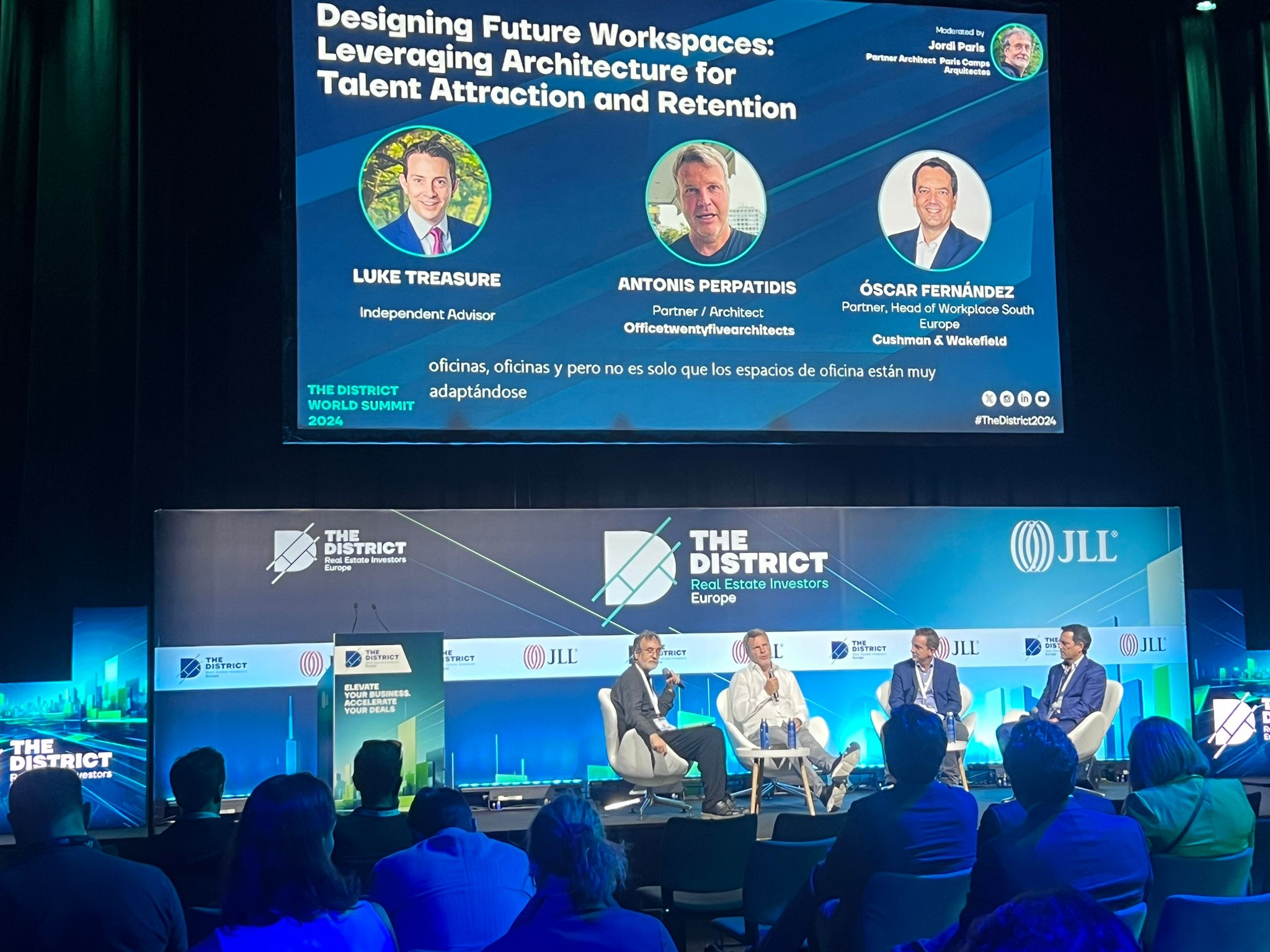Last September 25th Jordi París was the moderator of a round table entitled “Designing Future Workspaces: Leveraging Architecture for Talent Attraction and Retention”
The table was composed by relevant experts about this topic: @luketreasure (independent investment and development advisor -Hines, Conren Tramway…-), @antonisperpatidis (international architect) and @oscarfernandez (Cushman & Wakefield Head of Workplace South Europe).
These are the main topics discussed:
- Companies Buildings decisions are done by the Human Resources departments, no longer by the investment or infrastructure ones.
- This has drastically changed organizations requirements: moving a company into a building is no more just a matter of economical investment, but a strategic decision for the future of organizations. This has consequences:
- Workspace market is segmented in two: some buildings are adjusted to the new model and can access to higher rents, and the rest must compete in the lower rents market.
- Middle range buildings market tends to disappear, with the potential business consisting of the refurbishment of old model buildings to the new model.
- The new building model can be parametrized: buildings are flexible, sustainable and attractive.
- Flexibility is the capacity to incorporate changes in workspaces throughout time. Inflexible buildings have no real attractive for investors.
- Sustainability is necessary for buildings to be in this new model market. Unsustainable buildings, or the ones that cannot be certified, have a residual value.
- Attractiveness means providing a relevant and healthy experience to the users, helping them incorporate talent into the organizations.
- Hot Desk is not increasing, so this potential office surface optimisation is not taking place. At the same time, relevant companies are reducing their employee’s off-site work, so most offices are beginning to reverse unoccupation processes.

